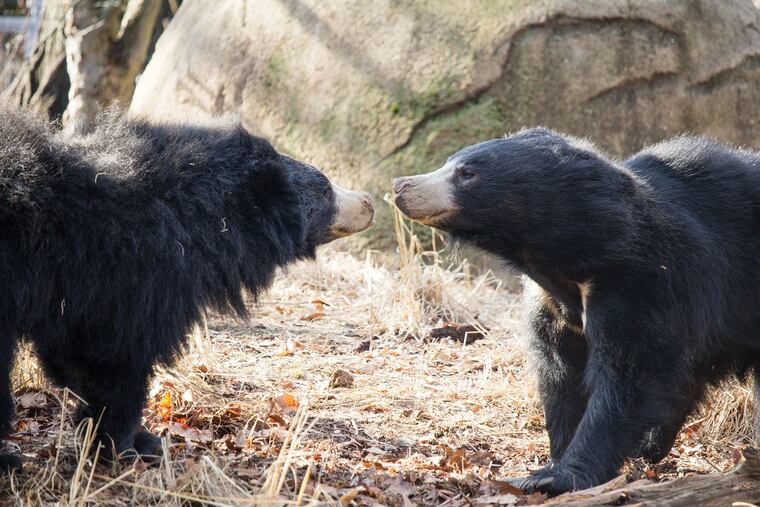Congrats to this Philadelphia sloth bear couple that just had their first cub
The cub is the first sloth bear to be born at the Philadelphia Zoo in more than 20 years. Congrats to momma bear Kayla.

A tiny bear cub with a flexible snout, long finger-claws, and not-yet-known gender has become the first sloth bear to be born at the Philadelphia Zoo in more than two decades.
Sounds cute, right? Sure.
About a month ago, the zoo welcomed the first healthy sloth bear born there since 1997, courtesy of sloth bear parents/couple Kayla, 7, and Bhalu, 6, officials announced this week. The bear cub hasn’t been named, but mom and cub are doing well and are being monitored by zoo staff via camera for the bears’ privacy.
(Bhalu’s not involved, though. In the wild, father bears don’t burden themselves with infant care at all and instead hang out with their friends. Figures. Hope you’re enjoying basketball season, Bhalu.)
Take a gander at Kayla and her cub, though:
The cub becomes the fourth sloth bear at the Philadelphia Zoo, following its parents and 13-year-old Balawat. The baby was small at birth — most sloth bears weigh only about a pound when they’re born — and was “essentially helpless,” according to the zoo, and relied entirely on Kayla for its care. Not to worry, this sloth bear baby will likely grow into an absolute unit and could one day weigh up to 300 pounds.
Sloth bears, a type of bear indigenous to India, Nepal, and Sri Lanka, are considered part of a vulnerable species and their population has declined in recent decades. They have flexible snouts that are like built-in vacuums that they use to suck up termites and ants. Yummy. They also eat fruit, flowers, sugar, and honey.
Zoo officials said many baby bears don’t survive their first days. Kayla gave birth to a cub last year that died shortly after birth, and there was a second baby in the same litter as this recent cub that also died in a similar manner.
Momma bear is expected to care for the cub in a sheltered den for the next several months before it can emerge into the real world. It’ll likely ride on mom’s back for up to six months and could nurse for up to a year.
No word yet on when the cub will be on exhibit or when the gender reveal party is.